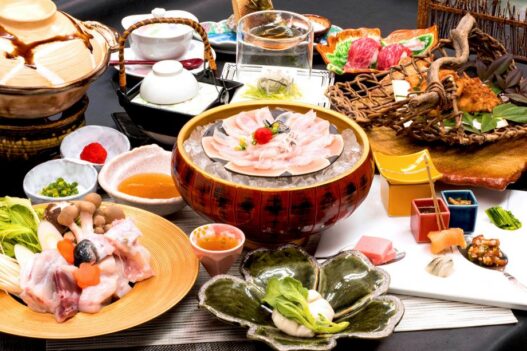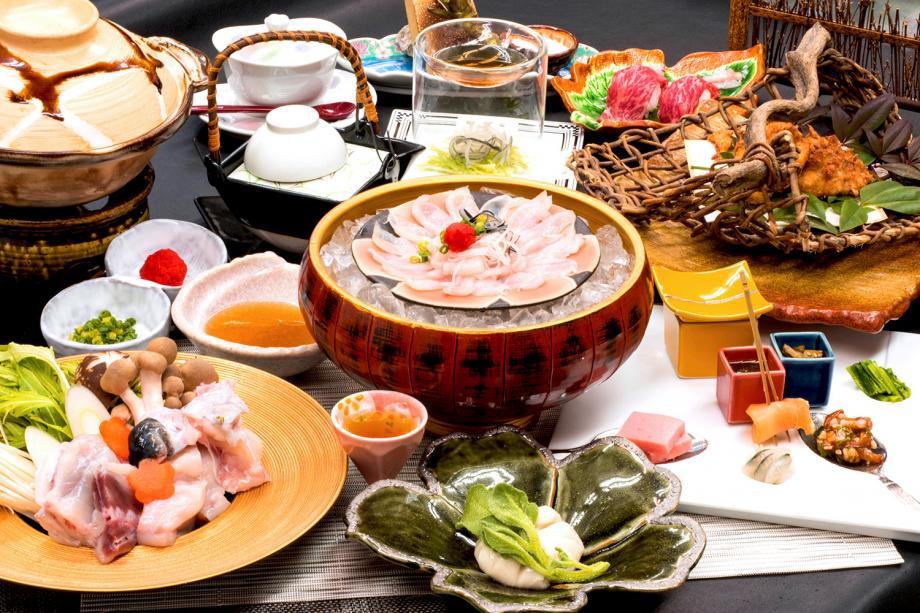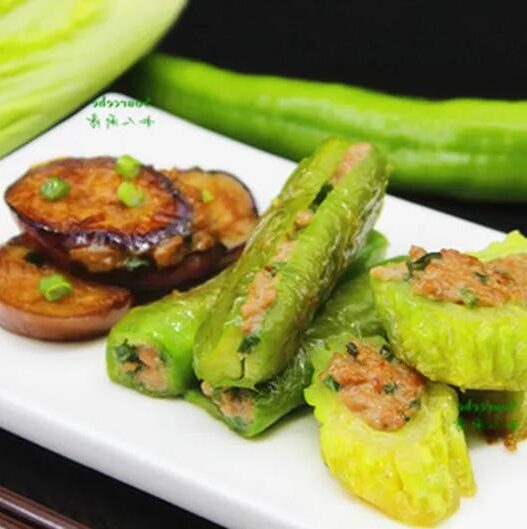For those intrigued by Japanese pufferfish cuisine, you’ve likely heard the phrase: “Tiger Puffer in the west, Kichiji in the east.” The Tiger Puffer (Takifugu rubripes) is a highly esteemed pufferfish variety in Japan, particularly in the Kansai region. Known as the “Winter Taste King,” it’s celebrated for its unparalleled flavor and texture. In specialized pufferfish restaurants, licensed chefs craft exquisite multi-course meals featuring this luxurious fish, making it a favorite among gourmands.
The Tiger Puffer boasts a snow-white belly with bluish-black spots on its chest and rear. Its body is covered in rough spines, which stand erect when the fish inflates to deter predators. As one of the larger pufferfish species, it can grow up to 70 cm in length and weigh over 8 kg, solidifying its status as a premium ingredient in Japanese cuisine.
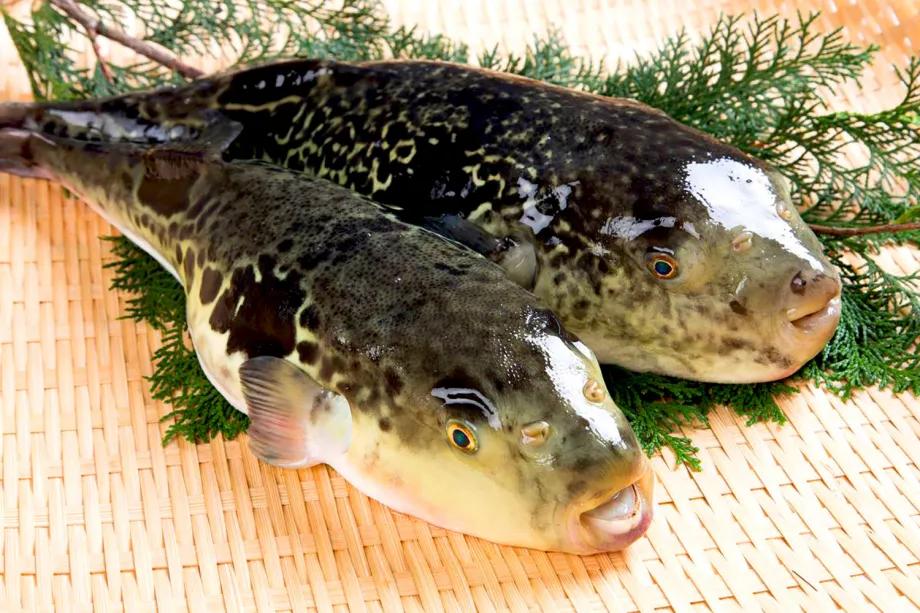
Where is the Tiger Puffer Found?
The Tiger Puffer thrives in the Pacific coastal waters from southern Hokkaido to Kagoshima, as well as in the Seto Inland Sea and the East China Sea. While its flavor is exquisite, preparing it requires extreme caution. Nearly all its internal organs are toxic, with only the meat, skin, fins, and milt (semen sacs) being edible. This makes it both a delicacy and a culinary challenge.
Why is the Tiger Puffer So Precious?
1. Low Yield Rate
Compared to other pufferfish, the Tiger Puffer has a larger head, leaving only about 30% of its body edible after removing toxic parts. In contrast, other pufferfish varieties yield around 40% edible meat.
2. Rarity
While farmed pufferfish have become more common, they can’t replicate the unique aroma, sweetness, and tender texture of wild Tiger Puffer. Overfishing and environmental changes have drastically reduced the population of wild Tiger Puffer, making it a rare and expensive delicacy. In Japanese wholesale markets, farmed Tiger Puffer sells for 2,500–3,000 yen per fish, while wild specimens can fetch 4,500–10,000 yen.
3. Complex Preparation
Handling pufferfish requires specialized skills and licenses due to its toxicity. The toxic parts must be carefully disposed of through professional incineration, adding to the cost and exclusivity of Tiger Puffer dishes.
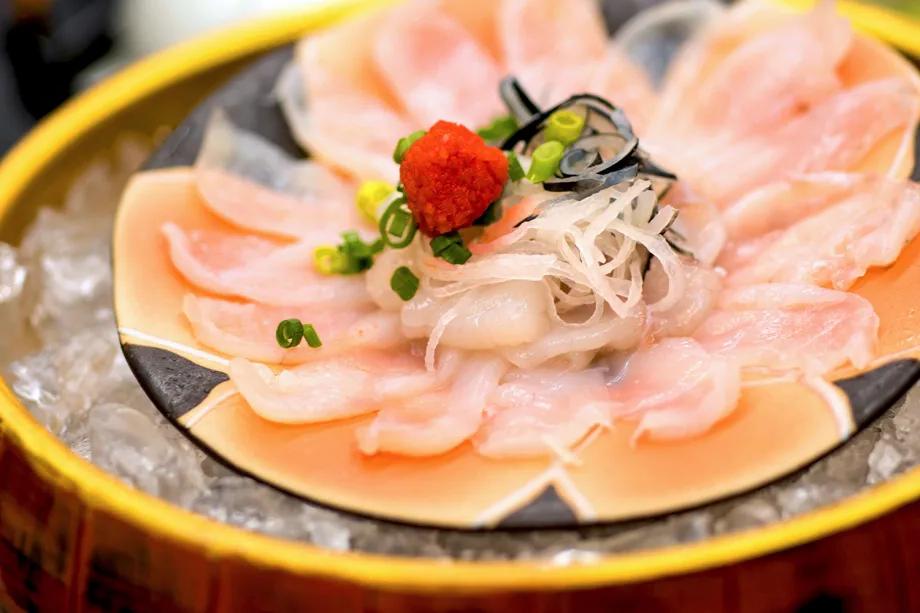
When is the Best Time to Enjoy Tiger Puffer?
The peak season for wild Tiger Puffer is from the autumn equinox to the spring equinox, particularly during December to February. During this period, the fish is at its most nutritious and flavorful. The milt, a prized delicacy, also matures as the fish approaches its spawning season.
However, wild Tiger Puffer is best avoided from March to July, when its toxicity spikes due to spawning. Farmed Tiger Puffer, on the other hand, offers consistent quality year-round, making it a great option for summer dishes when lighter flavors are preferred.
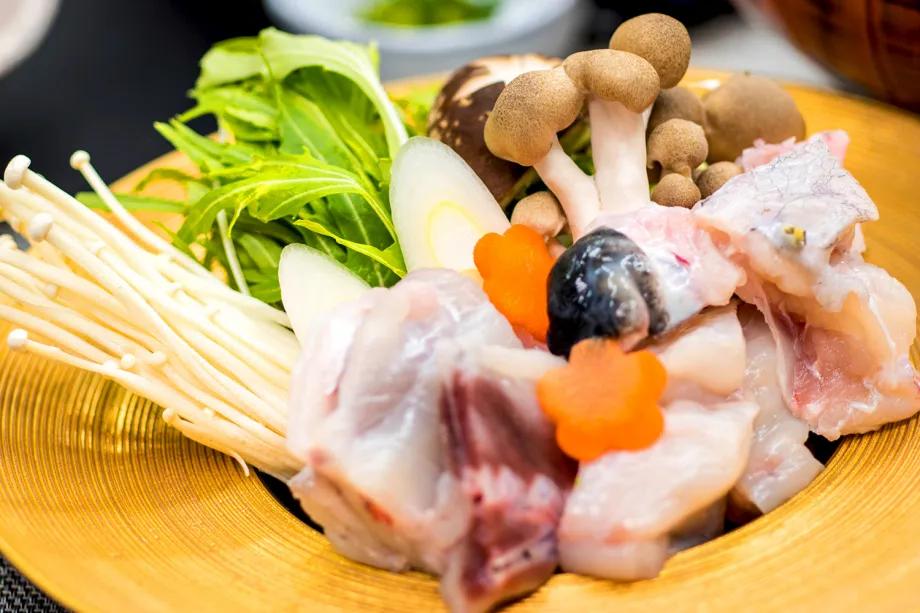
How is Tiger Puffer Prepared?
1. Sashimi
Pufferfish sashimi is a classic preparation. Thinly sliced Tiger Puffer, cut into 1–2 mm pieces, showcases its natural sweetness and firm texture. The low fat and high fiber content give it a satisfying chewiness. Served on large round plates, the translucent slices often reveal intricate patterns beneath, adding to the dish’s elegance. Common presentations include “Chrysanthemum Bloom,” “Peony Bloom,” and “Flying Crane,” each showcasing the chef’s artistry.
Instead of soy sauce, Tiger Puffer sashimi is typically paired with ponzu (citrus-based sauce), which enhances its delicate flavor. Adding condiments like scallions or grated radish creates a refreshing contrast.

2. Milt (Shirako)
Milt, or fish sperm sacs, is a luxurious delicacy in Japanese cuisine. Tiger Puffer milt, often referred to as “jewels of the sea,” is rich in protein and prized for its creamy texture and rich flavor. It can be served poached with ponzu, grilled, or even fried as tempura. Its melt-in-your-mouth quality makes it a standout dish.
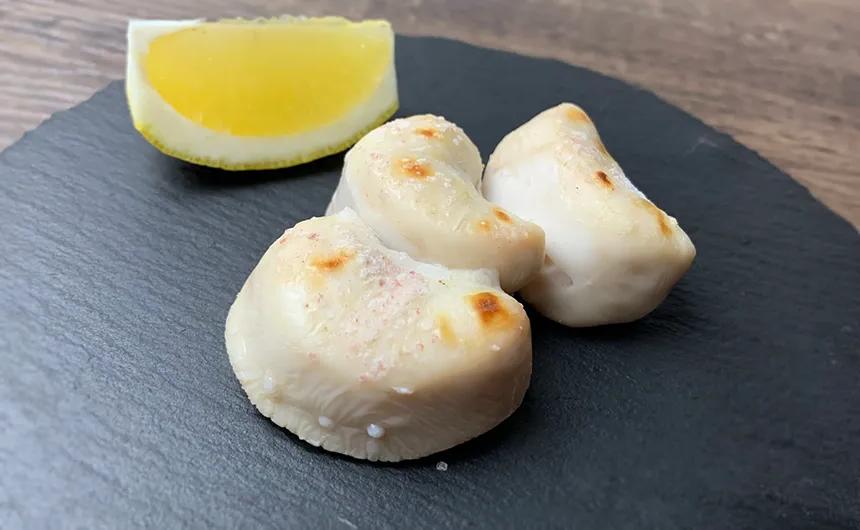
Cultural Significance and Global Appeal
The Tiger Puffer is more than just a dish; it’s a symbol of Japanese culinary artistry and precision. Its preparation reflects a deep respect for nature’s balance—celebrating its beauty while acknowledging its dangers. For adventurous food lovers, experiencing Tiger Puffer is a journey into the heart of Japanese gastronomy.







